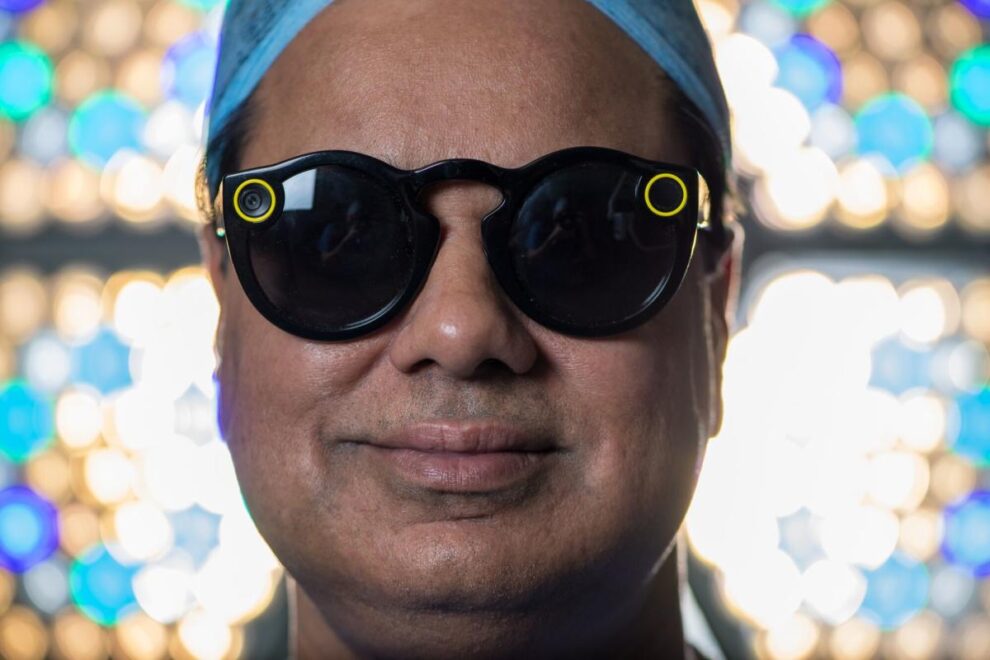
(Bloomberg) — Snap Inc. Chief Executive Officer Evan Spiegel said he’s investing more aggressively in bringing artificial intelligence and machine learning to Snapchat to make it more interesting for its users, the next major shift after years spent overhauling its advertising business.
Most Read from Bloomberg
“There was a recognition that we’d fallen behind the curve on the machine learning side, which, to some degree, was reflected in the business performance,” Spiegel said in an interview. “We needed to improve there and bring together some of our most senior machine learning folks to just talk about what it would look like for us to get to state of the art and really invest.”
Being able to spend more time on fun improvements — like making the content on the Snapchat app more personalized or building artificial reality filters and software — has been a hard-earned accomplishment for Spiegel. His company has been grappling with monumental shifts in how people use social media apps and what kind of digital ads marketers want to buy on them. He spent much of his time the last few years overseeing the revamp of Snapchat’s money-making advertising business, making big changes that are finally showing signs they’re working.
In 2021, the Snapchat experience revolved around messaging and Stories from friends and camera filters that spiced up posts. For advertisers, it was largely about telling brands’ stories that stirred emotions, not so much campaigning for immediate purchases. Snap needed to evolve its app for both of those important groups, a change that would require new technology, expensive infrastructure and a reshaped organization.
Now, the company is funneling money into building machine learning, AI and augmented reality features that play into Snap’s ads business and user feeds. Instead of building it all in-house like peers at Alphabet Inc. or Meta Platforms Inc., Snap is working with big tech partners like Amazon.com Inc. and Alphabet’s Google for cloud partnerships, freeing it up to work on product innovations and new Snapchat experiences.
Still, Snap expects to continue investing about 84 cents per daily user each quarter going forward on infrastructure alone. That’s roughly $1.5 billion a year, just over half estimated annual operating expenses, according to Bloomberg calculations.
Direct Ads
It’s an investment strategy made possible by the necessary yet self-inflicted pain of overhauling the company’s advertising business. Snap has moved from a focus on brand advertising to expanding into direct response campaigns that prompt a more immediate purchase or app download — ads that are more technically challenging to build, but also much more lucrative.
The overhaul has come at a price. Snap’s stock has fallen more than 70% since its pandemic highs, but the company has made the improvements that Spiegel promised. After posting the first two quarters ever of declining revenue in 2023, Snap’s new ad offerings are catching on. Snap is back to growing double digits and analysts expect its best sales year ever. After a positive earnings report last month, the stock is up more than 71% from a year ago.
“We just try to be brutally realistic about the operating environment, but then really have faith in our team and our ability to execute through it,” Spiegel said from the stage at the Bloomberg Tech Summit earlier this month. “That allows us to keep that positivity that I think is so critical in such a volatile period of time.”
Analysts, too, are taking notice.
“Years of diligent work are beginning to pay off for Snap’s ad business,” Max Willens, a senior analyst at Emarketer, said after the latest earnings report. “Snap appears to be developing some credibility as a platform that can deliver.”
Building Again
With ad revenue growing again, Snapchat plans to expand its content offerings and augmented reality experiences – areas where Spiegel plans on spending more time personally. It’s also pushing new product experiences. Snap is hoping to improve its recommendation algorithms for Stories and its short-form video feature, Spotlight, which competes with TikTok. The next big swing for Snapchat is to bring those two products together. “I think that’s going to be really beneficial to the way that people discover our content on our service, so that’s a big priority,” Spiegel said.
Having to play catchup is a unique position for Spiegel, who’s developed a reputation for being ahead of the competition when it comes to identifying trends in the social media industry. Some cases have been a positive — like Stories and face filters, or an in-app AI chatbot and a successful social media subscription offering.
Other trends that Spiegel has spotted have been harder to stomach. He sounded the alarm early on the post-pandemic pullback in marketing spending, and was among the first to initiate deep layoffs and other cost-cutting at Snap, killing projects to refocus the business on fewer priorities.
When it comes to the future of computing, Snap is hoping that Spiegel’s product instincts will pay off again. The CEO initially put his stake in augmented reality, while the company’s chief public competitor, Meta, went all in on virtual reality. When Snap was building glasses and filters that change the world around you when captured on camera, Meta was working on bulky headsets and transporting users to virtual worlds. Meta has since spent more time and resources on smart glasses, and recently rolled out Ray-Ban sunglasses equipped with cameras — much like Snap’s own camera glasses, called Spectacles, that were launched in 2016.
Snap hasn’t released a new pair of its own glasses in more than three years, but it’s still building and developing the technology behind the scenes. Users already see the work within Snapchat, like in an uncannily realistic filter that shows what you’d look like with 1990’s style, or filters that work live at LA Rams football games and alter fans’ faces on the jumbotron.
For Spiegel, augmented reality is promising because it can be “integrated in the world and shared together,” he says. “A lot of what we’re focused on are things that just aren’t possible with technology today. So whether it’s a VR headset or your computer or your phone, I think people feel really isolated by the technology products that they use today. We’re looking towards this future where people are going to play together and learn together and work together in the same physical shared environment, but enabled by augmented reality.”
It’s similar to how the company sees its Snapchat user base, which primarily uses the app for messaging but can also post or scroll through content. “What we find is that people continue to come back to the service to talk with their close friends and family,” Spiegel says. “Where we do see churn, it’s often times where we haven’t been able to connect people to the folks that matter the most to them.”
Most Read from Bloomberg Businessweek
©2024 Bloomberg L.P.









